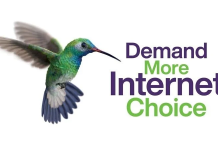India’s business-to-business ecommerce market (eB2B) market is projected to reach $90-$100 billion by 2030, growing at compound annual growth rate (CAGR) of 40-45 per cent from $5-6 billion in 2022, a report showed on Tuesday.
Platforms catering to retailers constitute 70-80 per cent of the eB2B market, while the remaining 20-30 per cent is occupied by platforms catering to wholesalers, according to a report by Redseer Strategy Consultants.
“Growth in this market will be led by deepening penetration among retailers across categories and geographies, and a higher wallet share for eB2B platforms,” said Mrigank Gutgutia, partner at Redseer.
“Retailers will get habituated and reap the benefits offered by these platforms, such as cheaper procurement, faster deliveries, higher fill rates, and consistency in product quality,” he added.
Currently, the Indian retail market worth $950 billion is highly unorganised and dominated by general trade.
While general trade drives 83 per cent of the overall market, its share is greater than 90 per cent in the groceries space.
The report mentioned that there are limited multi-category platforms with pan-India operations across categories such as grocery (staples and FMCG), electronics and accessories, general merchandise, fashion, and others.
The rest of the eB2B platforms operate in fewer categories or verticals across regional and national levels.
“Over the last few months, many of these vertical platforms have been struggling, and across categories have shown limited growth/ been flat or declined due to challenging unit economics and prevailing macro-economic conditions, while multi-category platforms like Udaan have gained market share to reach 55-60 per cent of the retailer-led eB2B market,” explained Gutgutia.
The findings showed that the multi-category approach helps optimise go-to-market (GTM) and credit costs.
“Vertical platforms focused only on grocery or discretionary categories have a tough time managing GTM costs because of their low retailer density, which results in lower throughput per feet-on-street (FoS) and because of low demand predictability,” the report noted.
Multi-category eB2B platforms are best positioned to strike the right gross margin to cost structure balance by cross leveraging assets and capabilities across categories, it added.
20230620-101001




